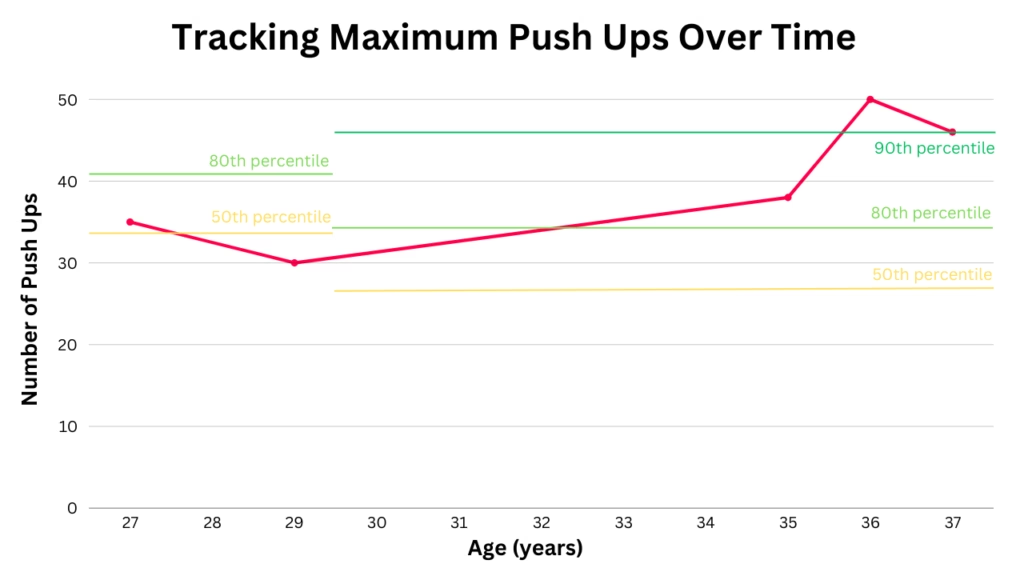The push up is a popular exercise for testing muscular strength and endurance. It is relatively simple to complete, requiring no equipment, and can be modified for all ability levels. The most common ways to test it include maximum total reps, or total reps in a set amount of time.
How to Complete a Push Up Test
The push up test outlined here involves completing the maximum number of consecutive push ups with no rest. Before we get into the specifics, let’s start with the basic push up technique.
How to Perform a Push Up
- Position yourself on all fours with hands directly under the shoulders
- Lift the knees and walk the feet back until there is a straight line from ankle to hip to shoulder*
- Feet should be together or very slightly apart
- While maintaining a straight body position, lower the body until the chest is almost touching the floor
- The arms should be at a 45 degree angle to the body, so the elbows are not tight to the body and not too wide. Someone standing behind you should see your body and arms make an arrow shape “↑” and not a capital “T”
- Push your body back up again, maintaining a rigid body position, until the arms are straight
- Breathe in as you descend, breathe out on the way back up
*The modified push up for women allows the knees to be dropped back down following step 2.. In this position the knees will be behind the hips and not underneath. The straight line would therefore be from knee to hip to shoulder.

In order to make it a fair assessment, the push ups should be done with the same warm up each time and using a set tempo. Here is a 10 minute push up test warm up that I recorded for you to follow along in real time. As for the tempo, I personally find that 50 beats per minute, meaning 25 push ups per minute, is the right tempo for me. It is a balance between feeling too slow early on and having the time to squeeze out reps under fatigue. A google search for the word “metronome” should bring up an adjustable metronome, as seen above.
Below is a recording of a maximum push up test I completed in early 2023. I did this following the 10 minute warm up above and with a metronome set to 50 beats per minute. You should be able to hear the metronome in the background. Additionally, this was done in the late afternoon, which can provide as much as a 6% performance boost compared to other times of day.
What Do My Results Mean?
The following tables have been reproduced from the book “Norms for Fitness, Performance and Health” by Jay Hoffman. The 50th percentile indicates the number of push ups that half of that age group are capable of doing, while the 90th percentile is the value that only 10% of men are capable of.

As women on average are around 50% as strong as men in upper body movements, their normative values are for the modified push up from the knees. This allows them to achieve a similar number of reps, thus being a good measure of muscular endurance. Were they to be assessed on standard push ups it would then become more of a muscular strength test.

Tracking Over Time
For most individuals, an upper body test like this can be completed once a year. There are a set of “essential” tests I believe everyone should be tracking each year, and I do not consider this to be essential. However, it is a good indication of overall upper body function and therefore has some value over time.

I’ve been tracking my own results consistently since turning 35 and have a few reference results from my late twenties. I’ve added a few percentile lines to illustrate the changes with age. You can see that most recently I am up in the 90th percentile.
Muscular endurance is very movement specific, so in order to improve your push ups the best thing you can do is lots of push ups!

